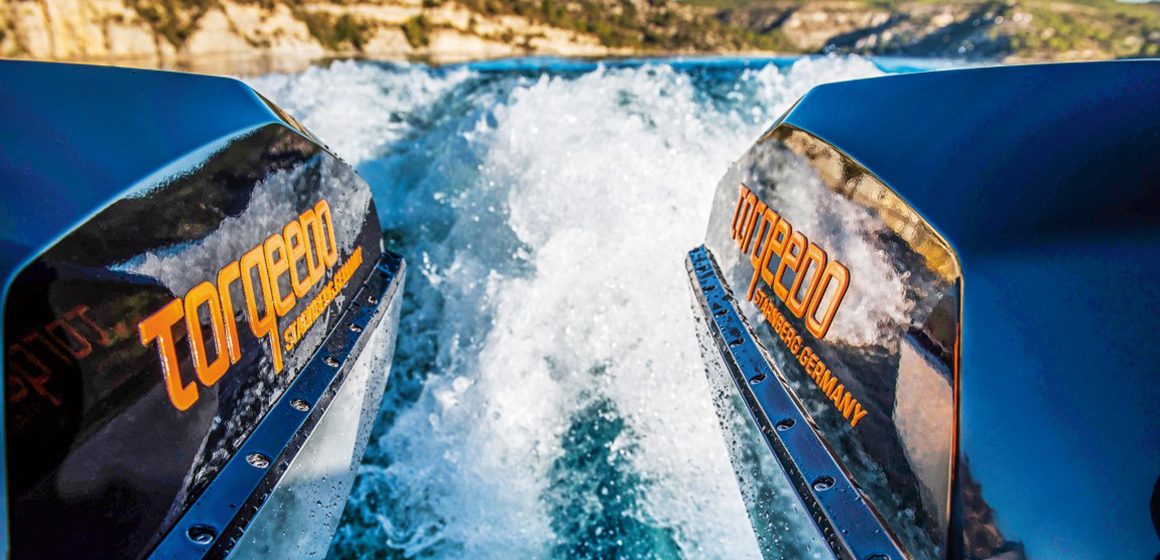

Just as motorists have come to embrace the promise of electric vehicles, boaties look to the future as practical electric vessels begin to filter into the market. From personal watercraft to luxury yachts, electric boats are set to make a splash – not in the distant future, but right now. Story by Craig Ritchie.
It is hard to believe that a dozen years have passed since Tesla introduced its ground-breaking, all-electric Roadster in 2009.
Although hardly perfect – Top Gear host Jeremy Clarkson initially gushed about the car being “biblically quick” only minutes before the production crew were shown pushing it off the track after its batteries ran flat – Tesla’s first production electric car laid the foundation for what today is clearly the future of the automobile. Although unintentional, it also laid a similar foundation for the future of boats.
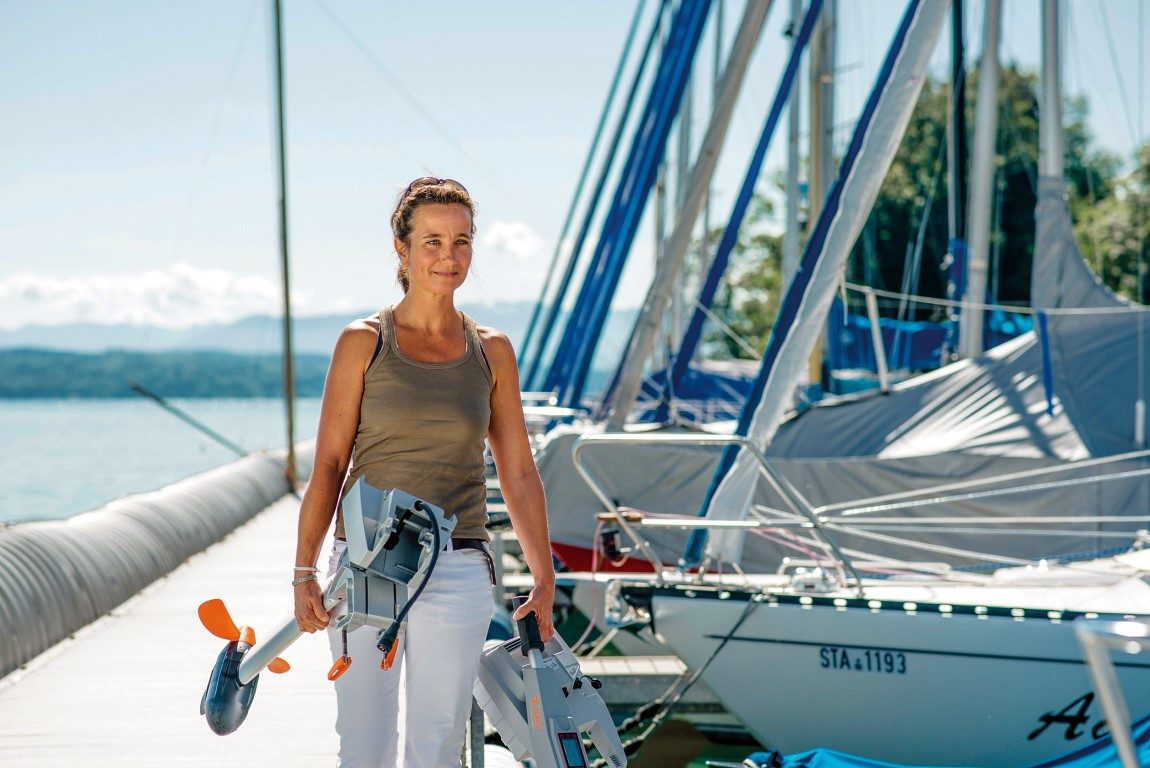
Electric boats are nothing new, but so far the overwhelming majority have been small craft focused on putting along at walking speed. That’s been partly by design, in an attempt by early electric boatbuilders to appeal to the sensitivities of the people seen as most likely to become early adopters. But it also reflects the limitations of the battery technology of the time, and the simple reality that until quite recently, operating the boat at anything above idle speed reduced run times from hours to minutes.
Thankfully, that’s beginning to change and, on the strength of much-improved batteries and charging systems, today we’re seeing electric boats that are far more functional in the eyes of everyday boaties. From personal watercraft to luxury yachts, electric boats are poised to make a splash on the water to rival what electric cars have achieved on the roads.
The Personal Touch
In view of their smaller size, lighter weight and lower power demand, it comes as no surprise that one of the first places for electric propulsion to find its niche is in personal watercraft. In many respects, PWCs are almost ideally suited to electric propulsion given the way they’re used.
Unlike internal combustion engines that take a moment or two to spool up to full power when you squeeze the throttle, electric motors are binary – they’re either completely off, or completely on. That makes them ideal for PWCs, where that ability to dish out 100% power in the blink of an eye gives electric PWCs blinding acceleration that petrol-powered competitors can’t hope to match.
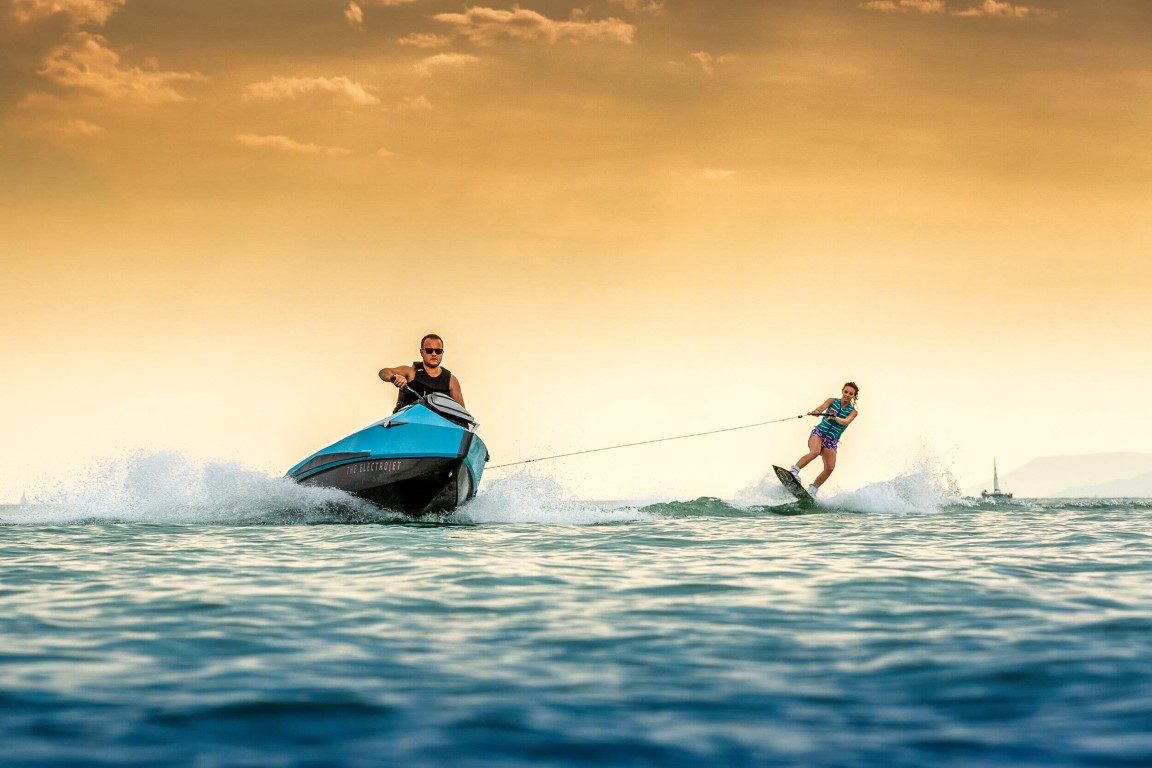
Introduced at the 2018 Cannes Yacht Show, the Hungarian-built Narke GT45 Electrojet was the first electric PWC to come to market. Built with the luxury superyacht buyer in mind and priced accordingly at around €39,000 (almost $68,000), the Narke nonetheless opened a lot of eyes with its startling performance.
The latest Narke model is the all-new GT95 which seats three passengers, boasts a 127hp-equivalent power output, and offers an optional onboard quick-charger that reduces full-charging time to just 90 minutes. It’s still very much priced for the superyacht crowd, starting at €47,500 or around NZ$80,000, but it offers a luxurious build and a blazing top speed pushing 80 km/h.
In Canada, Taiga Motors showed a prototype of its own electric PWC in 2018, and it’s now coming to market. The fully-electric Taiga Orca is said to run for up to two hours between charges, and can fully reload a depleted battery in three hours with its standard 6.6kW charger. Or, if you’re in a hurry, it can also use an optional DC quick-charger to bring the battery up to 80% in just 20 minutes. Three trim levels are offered, ranging from about $17,000 for the base Orca Sport to around $27,500 for the top-of-the-line Performance Carbon edition, which features a carbon fibre deck and hull.

Joining the fray is Sea-Doo, which in March announced its intention to go all-electric by 2026. Even better, the world’s largest PWC builder plans to have its first fully-electric Sea-Doo on the market within two years.
“We have always said electrification was not a question of ‘if,’ but ‘when,’” said BRP president/CEO, José Boisjoli. “While our current product portfolio is very strong and exciting, our objective is to expand our offering with electric options to attract new customers.”
Surf’s Up
The eye-popping power and crushing torque of electric propulsion hasn’t just caught the attention of the PWC community. Manufacturers of watersports towboats also see enormous potential in electric power, and have been quietly developing it for water skiing, wake surfing and wakeboarding for over a decade.
Florida-based Correct Craft introduced its initial Ski Nautique E prototype – the world’s first electric watersports boat – at the Miami International Boat Show way back in 2011. With a pair of 103hp-equivalent electric motors manufactured by LTS Marine and a pair of 77kW batteries, the boat only ran for about an hour before running out of juice and going on charge overnight, but it was a start and it proved the concept of electric power had merit.
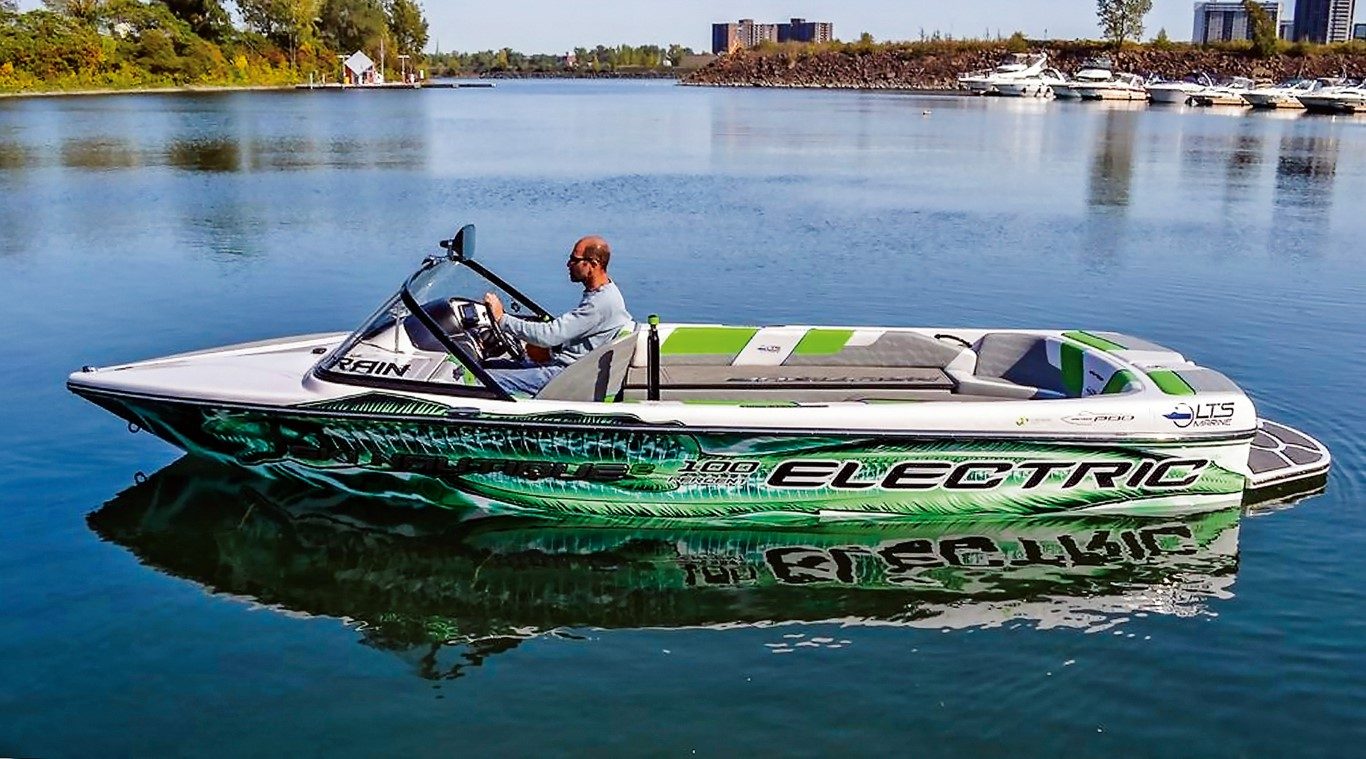
Fast-forward to February 2020 – just three weeks before Covid-19 was declared a global pandemic – and Correct Craft was back at the Miami Boat Show with its latest electric towboat, the Nautique GS22E. This time, the boat boasted up to three hours of normal-use run time, and a full recharge possible in as little as 90 minutes. The electric tow boat had come from concept to reality.
Over the past several years Nautique has gained considerable expertise in producing electric tow boats through collaborative ventures in Austria, initially with Ortner Electric and more recently, Ingenity Electric – now owned by Nautique parent Correct Craft as part of its Watershed Innovations subsidiary.
Go Fish
While towboats and PWCs focus on inboard power, electric propulsion is also making its mark in outboards. Starnberg, Germany-based Torqeedo introduced its 80hp-equivalent Deep Blue outboard in 2012, and has since conclusively proven that electric outboards can handle the grinding demand of daily commercial use. While high cost has kept the Deep Blue from finding similar success in the recreational market, improvements in battery technology are slowly driving those costs down.
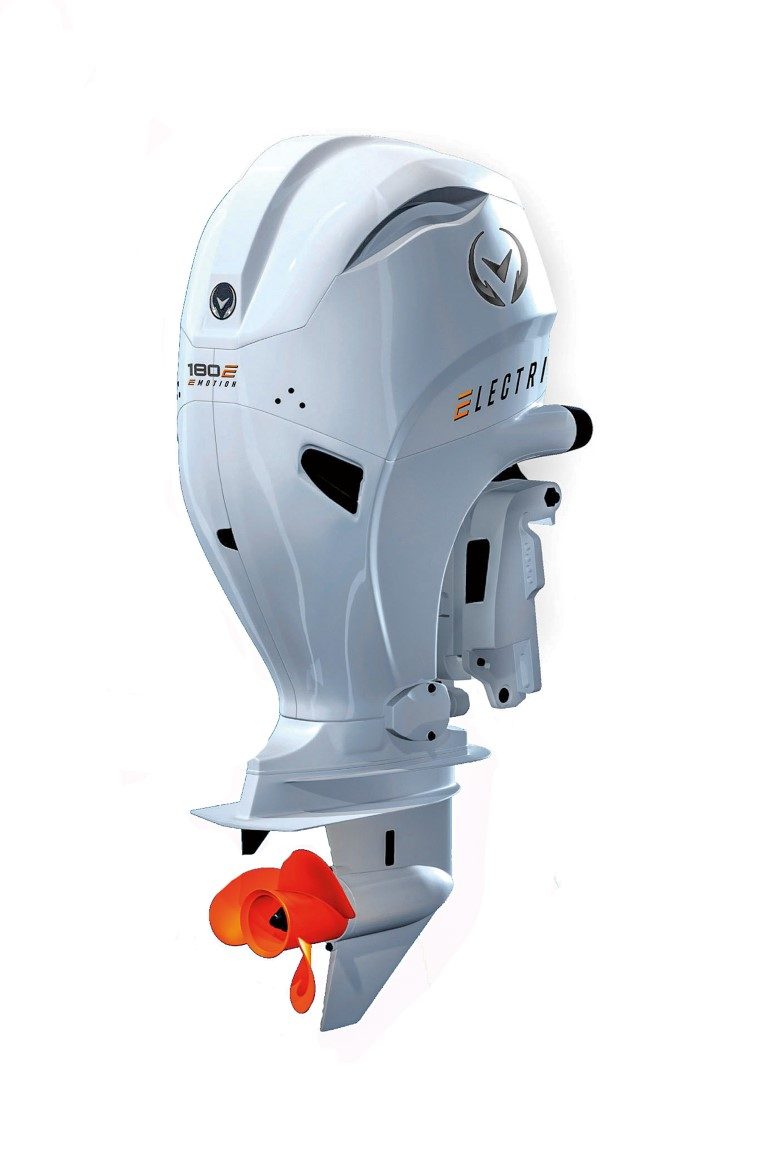
In Canada, Vision Marine Technologies introduced its E-Motion 180hp-equivalent electric outboard in May. Described as the first electric outboard expressly designed for sustained operation at higher speeds, the E-motion delivers an enticing value proposition – and one that’s only sweetened by aggressive pricing. “We come in about $5,000 Canadian higher than an equivalent petrol engine,” says CEO Alexandre Mongeon. “That’s not much of a premium, especially since the end-user never needs to buy fuel again. And, they enjoy all of the advantages of electric power right from the start including zero emissions, zero noise and 320Nm of torque, which is simply huge.”
The E-Motion’s battery comes separately, unlike the Torqeedo, bringing final costs a bit closer. But Vision Marine says that new engineering and software allows its motor to deliver far greater run times. “In terms of capacity, our 60kW battery is about the same size as a 75-litre fuel tank,” says Mongeon. “That battery will deliver the same range as a fuel tank of 75 litres driving a petrol outboard of comparable power output. Of course, if a person needs more range they can install two batteries.”
What about smaller outboards? In Europe, Moosburg, Austria-based AquaWatt Green Marine Technologies manufactures a range of electric outboards from 4 to 50kW, or 5 to 70hp-equivalent. The company’s been building electric motors since 1990, and today enjoys global distribution with customers in Germany, Norway, Sweden, Greece, India, Mauritius, Singapore, Australia and New Zealand.

Founder and owner Dieter Seebacher says the perception that electric motors are only for lightweight, slow-moving boats is an outdated myth. “Lakes and rivers in Austria provide our drinking water, so the use of fuel boats has been prohibited here for 50 years,” he says.
“In the past electric boats had less power, and were very slow, but today it is very different. Now we can go water skiing or wakeboarding. We have one commercial customer located on a lake in Austria, 2,000 metres high in the mountains, using one of our motors to power a 50-tonne raft with a restaurant on it. He moves it around the lake with just the one motor, way up in the middle of the Alps.”
It was only a matter of time till the big boys got involved, with Mercury Marine first to the table with its announcement this spring that it intends to launch its own line of electric outboard motors by 2023, with the first scheduled to hit the market late next year. “We’ll launch five new electric outboard models by 2023, and we intend Mercury to be the market leader in both conventional and electric marine propulsion by the end of that year,” said Mercury Marine president, Chris Drees.
Thinking Big
Big torque isn’t just something that small boatbuilders crave. Luxury yacht manufacturers also get the appeal of electric propulsion, which is why a handful of yacht builders have begun experimenting with the technology in their own products.
Launched in 2009, Mallorca, Spain-based Silent Yachts builds solar-powered cruising catamarans that are said to be the first fully-sustainable, ocean-going production catamaran yachts in the world to be powered exclusively by solar energy. Initially greeted with skepticism, the company claimed its yachts could easily cruise for up to 160km a day for weeks on end, then proved it in 2018 when one of its earlier vessels completed a trans-Atlantic crossing that was heralded as the first ever by a solar-powered electric yacht.
The company’s latest creation is an all-new, 20m Silent 60, a luxury cruising yacht with the highest levels of power, comfort and convenience seen yet in a vessel of its type.

Joining Silent Yachts in the luxury market is Polish boatbuilder Sunreef Yachts. The company already built a full line of both power and sailing yachts before extending its reach to include a full line of solar-powered ‘Eco Yachts’ with models from 40 to 100 feet in length. In a comparatively short time the company has racked up a number of technology award wins for its Eco line, including being named the 2020 winner of the UIM Technology Award in Monaco, and overall winner of the prestigious Oceanway China Yachts Award.
The company’s popular Sunreef 60 Power Eco model features a proprietary solar power system that covers 68.6m2 of its outer surface, extending the solar energy generation capacity to 13kWp. Solar panels are fully-integrated with hull sides, superstructure and curved areas all over the yacht for maximum solar exposure.
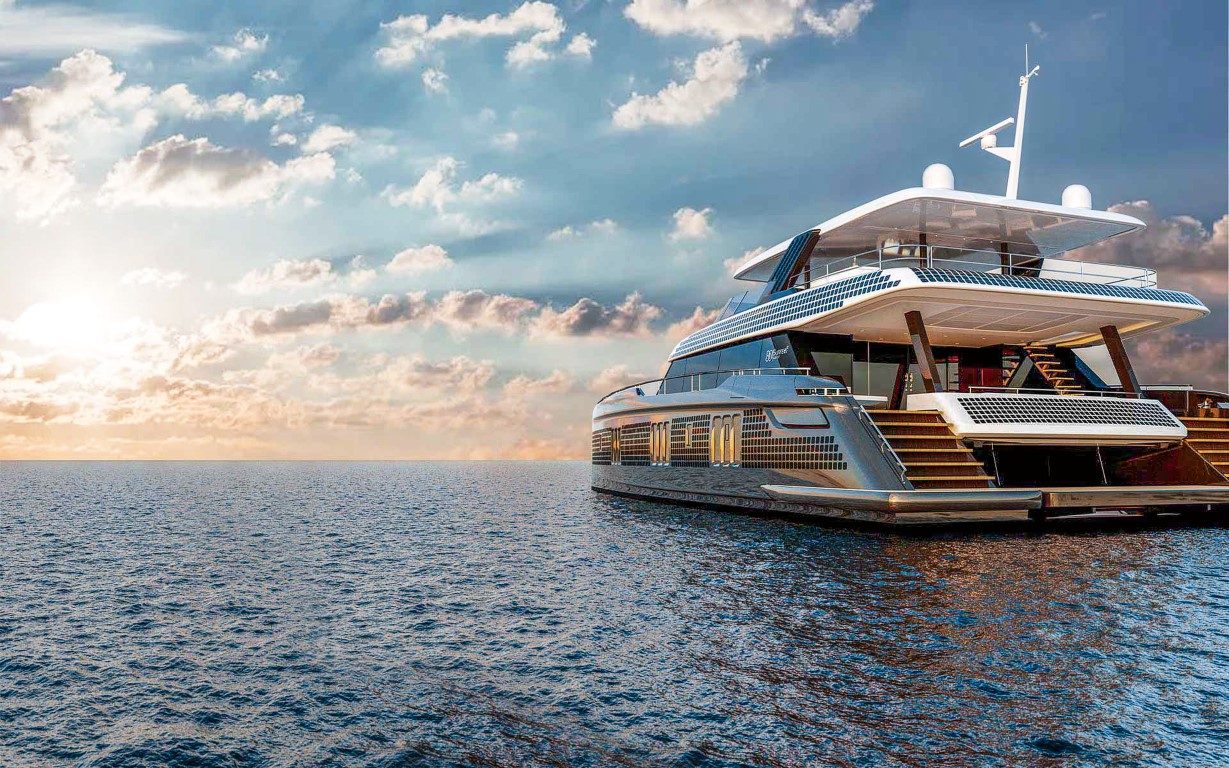
With additional green features including wind generators and eco-responsible finishing materials, the 60 Sunreef Power Eco is said to offer “a 360o sustainable cruising experience” – proving that electric power on the water has come a long way from small tenders pushed around on calm waters at barely walking speed.
As automakers and governments continue to invest heavily in electric propulsion, batteries and fuel cells, it’s clear that the age of sustainable, silent boating is drawing near. With no fumes, no emissions and no need for fuel stops, there’s a great deal ahead for all of us to celebrate. BNZ




